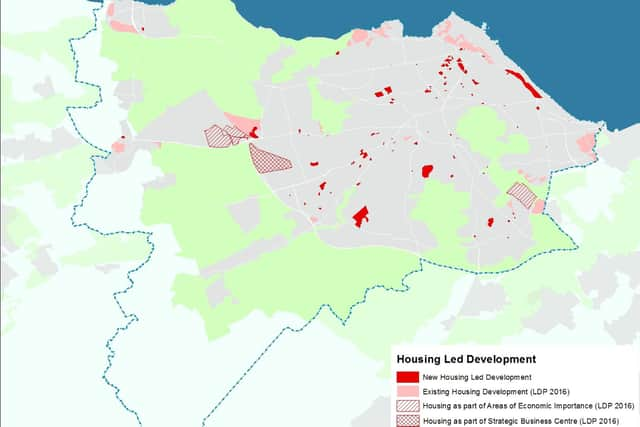'Housing on brownfield land is the best option for Edinburgh' - Readers' Letters


During the last couple of years, to support this I chaired an informal leadership forum attended by representatives of all the political parties on the committee, building consensus about what the plan might include, which held around 60 hours of meetings and had excellent input from all. It was therefore disappointing that Conservative councillors decided not to support this ‘Brownfield’ Plan which addresses growth and change in a new and environmentally friendly way.
The housing numbers included within City Plan are those which had already been approved by all members of the Planning Committee on 19 May this year, as Edinburgh’s submission to National Planning Framework 4. What a difference a new day makes in politics!
Advertisement
Hide AdAdvertisement
Hide AdI note that your opinion piece columnist the Conservative councillor John McLellan last week got his housing numbers wrong for site the he mentioned at Seafield (800 proposed as opposed to 1500, stand in the corner Sir!).
He also suggested a pension fund that ran a retail park within this wider area would not want to sell. While I am sure he will have checked this, however I’m also sure that the public will be aware that all such funds regularly reassess their investments as markets change over time. Of the market: who for example ten years ago (or even five) would have predicted that there might be a forthcoming planning application to demolish a big chunk of the barely 20-year-old Ocean Terminal, including its northern car park?
John also quoted from a planning consultant whose legitimate income is to lobby for and represent a range of clients, some of whom might actively support development in Edinburgh’s lucrative greenfield.
In terms of longer term investment – the climate emergency is not going to go away and we need to address the underlying issues. Any new building today, to have a long-term value, needs to be built as sustainably as possible and in the right location – retrofit is expensive as would be providing infrastructure to houses built over faraway fields. Typically the city ends up with a large chunk of the latter tab.
Advertisement
Hide AdAdvertisement
Hide AdFor all these reasons a brownfield plan makes economic and environmental sense over the next ten years and well beyond.
Cllr Neil Gardiner, Planning Convener, City Chambers, Edinburgh
So distressing to see the Capital in decay
My husband (born and educated in Edinburgh) and I ventured back to Edinburgh recently.
Although we’ve visited many times, we’ve never been so aware of the parlous state of the Edinburgh road system, plus all roads leading into and out of the city.
Advertisement
Hide AdAdvertisement
Hide AdEdinburgh is Scotland’s capital city, yet your roads are a disgrace.
Road surfaces, many and varied, are littered with old scars/works done by all of the utility companies to a questionable standard.
Add to that a proliferation of potholes, plus confusing, inadequate bus lane signage, plus worn out yellow lines and double yellow lines; a recipe for disaster.
Another observation was the amount of litter (including a disgraceful number or discarded face masks) lying in gutters, together with overgrown weeds.
Advertisement
Hide AdAdvertisement
Hide AdA capital city brim full of history, with amazing buildings and streetscapes that people visit from all over the world, is being let down. Who is responsible for this sad state of affairs?
Pat Huxtable, Southsea